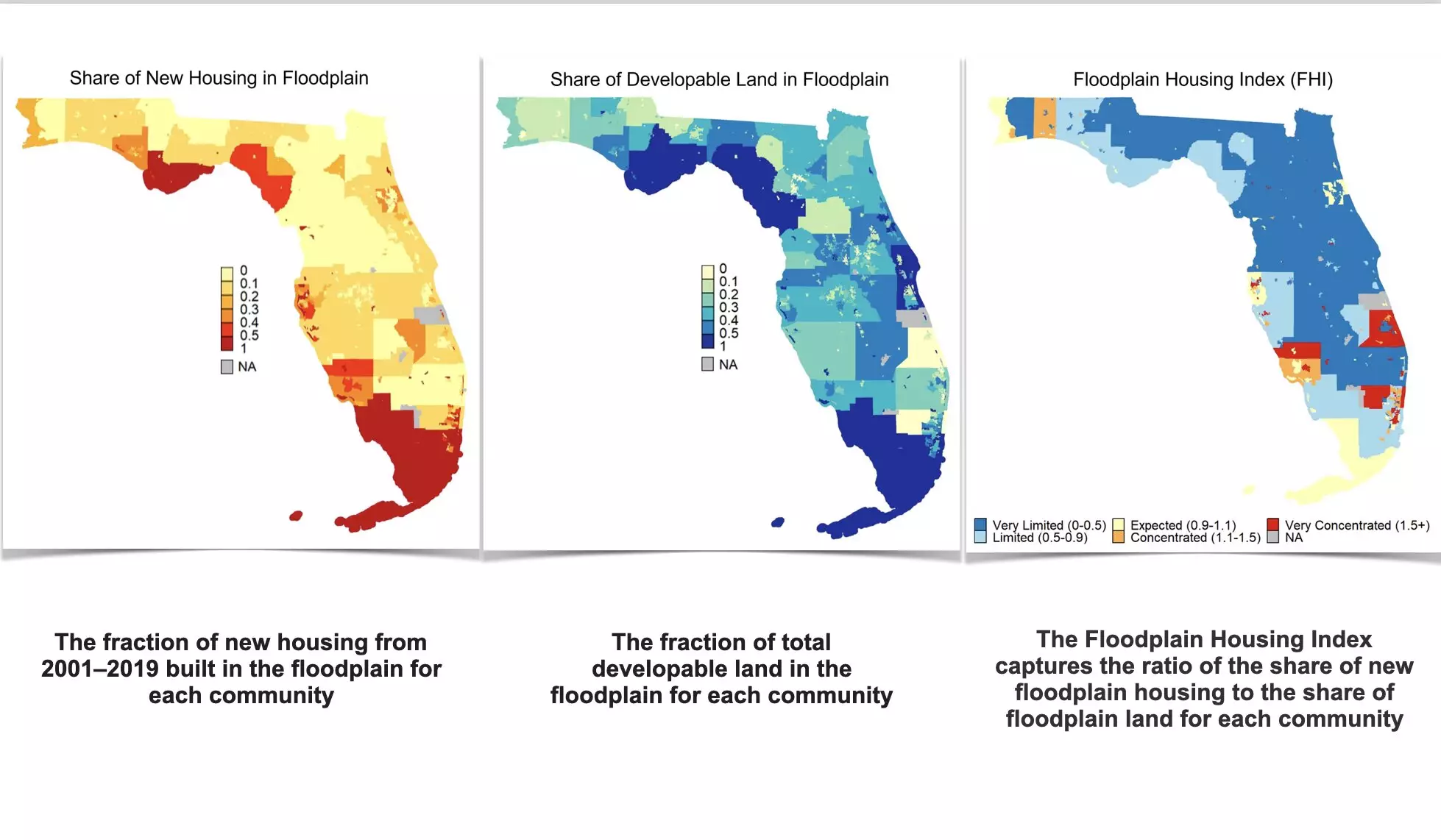As climate change continues to influence weather patterns and the frequency of extreme weather events, the development of floodplains poses an increasing risk to communities across the nation. Recent findings from researchers at the University of Miami’s Rosenstiel School highlight a troubling trend: over two million acres of floodplain have been developed in the United States over the past two decades, disproportionately affecting states like Florida. This surge in residential construction in vulnerable areas raises urgent questions about community safety, infrastructure longevity, and disaster preparedness.
The research, published in the journal *Earth’s Future*, illustrates critical patterns in floodplain development. Analyzing geospatial data, housing statistics, and regulatory floodplain maps, the authors estimated that approximately 840,000 new residential properties were constructed in floodplain areas nationwide. Of these, a staggering 398,000 were located in Florida, which accounts for 21% of the state’s new housing stock. Lead author Armen Agopian notes that these numbers, while substantial, may actually underrepresent the expected developments given the extensive nature of floodplains in Florida, indicating a more complex interaction between development practices and regulatory measures.
One notable aspect of the study is the assertion that an astonishing 74% of communities across the U.S. have limited new development in floodplains through local regulations. Moreover, 87% impose restrictions on new housing in these areas. This might suggest an awareness of the hazards associated with flood-prone regions; however, the existence of development practices that still prioritize construction over conservation in certain areas raises red flags. Coastal regions, in particular, show a tendency to allow new housing developments in floodplains more so than their inland counterparts. This discrepancy calls for a reevaluation of regional planning policies.
Impact of FEMA’s Community Rating System
Interestingly, the study revealed that communities enrolled in the Federal Emergency Management Agency’s (FEMA) Community Rating System (CRS) showed a higher incidence of development within floodplains. While the CRS incentivizes flood management practices by offering reduced flood insurance premiums, participation alone does not equate to safer development outcomes. As Agopian points out, it is essential that communities not only enroll in the program but also implement more robust floodplain management practices to truly mitigate risks. This requirement underscores the complexity of floodplain development; mere participation in incentive programs is not enough to protect communities effectively.
The correlation between floodplain development and increased flood-related damages cannot be overstated. As more residential and commercial structures are erected in these vulnerable areas, the potential for devastating impacts from flooding grows exponentially. This creates a precarious situation for residents and local governments alike, where the likelihood of damage escalates alongside the severity of floods when they inevitably occur.
Lessons from Successful Communities
A noteworthy insight from the study is the recognition of communities that have strategically avoided floodplain development. By proactively implementing measures to limit construction in these areas, some regions have managed to sidestep the severe flooding issues faced by others. This early intervention may serve as a model for other communities, suggesting that preemptive action can yield significant long-term benefits. As senior author Katharine Mach affirms, there is much to learn from communities that have taken these prudent steps, often without drawing much attention to their efforts.
The findings from this comprehensive analysis of floodplain development reveal a pressing need for policies that prioritize safety over development. As the impacts of climate change become increasingly evident, the construction of housing in flood-prone areas demands careful consideration and robust regulatory frameworks. Communities must strive to balance growth with environmental sustainability to mitigate risks, ensuring the safety of their residents and the integrity of their infrastructure in the face of changing weather patterns. The necessity for action is clear, and the stakes could not be higher.


Leave a Reply